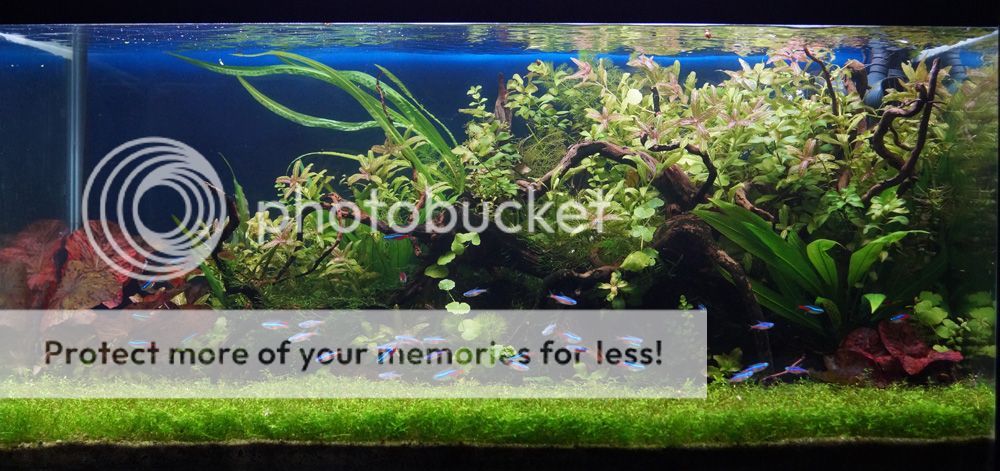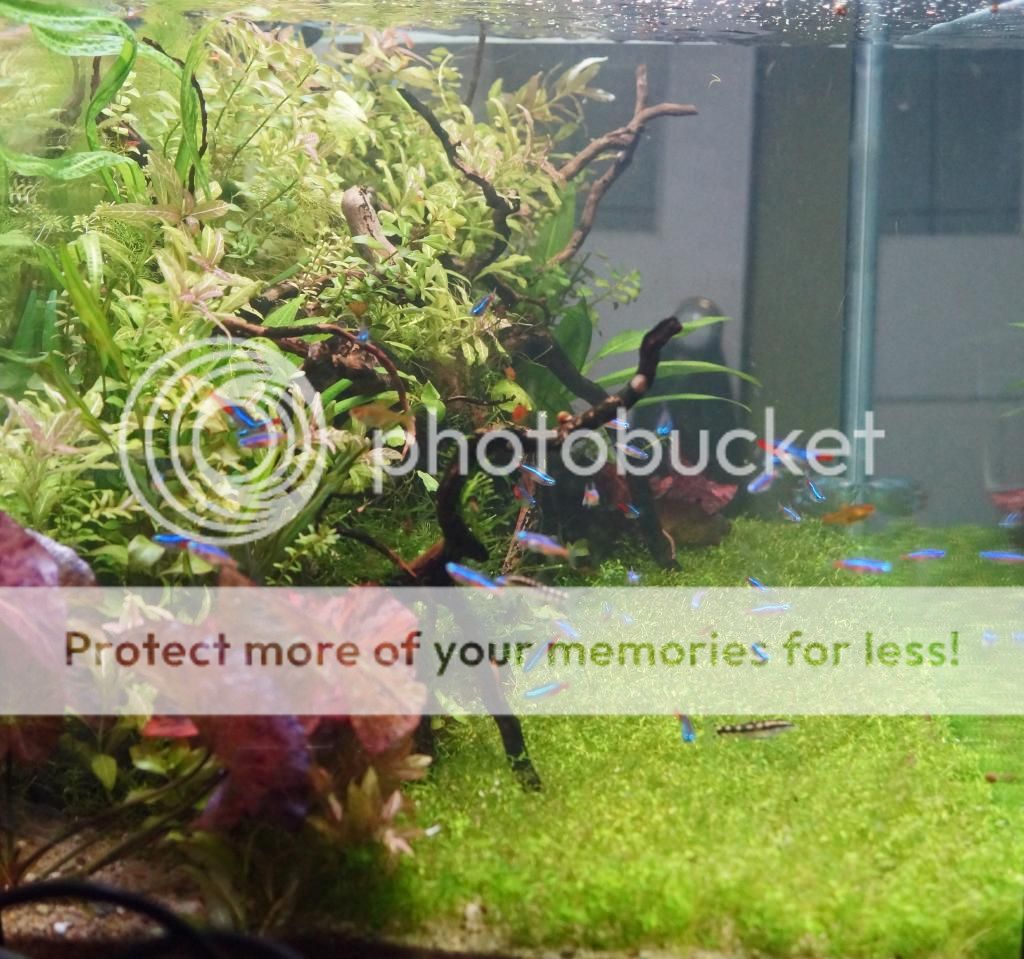Hey all!
So I set up 2 16L tanks 2 weeks ago, and they've developed this ugly brown algae thats covering everything. I'm aware its virtually impossible to keep algae out of planted aquariums, but is there any way to keep it at bay? I can barely see my betta in one of the anymore! D:
Both tanks have a substrate called propagating mix for cacti as their nutrient-dense layer. This was recommended by a friend, who says it's worked for her tank for 3 years without a problem. Lighting for both is a 25W full spectrum UVA globe for reptiles, which is a 'plant-growth stimulating' light. Well, it sure is good at stimulating algae growth, but I'm not so sure about the plants. Both tanks don't have filters, which isn't by choice, its a money issue. I'm currently doing 20% water changes on them twice a week to compensate.
In tank 1 (first pic) I have a heater and fish, and the plants seem to be doing ok in there. But in tank 2, my Dwarf Blyxa, green/gold rush and glossostigma plants are browning and looking manky as all get out. Is this a CO2 issue, or nutrient issue? I add Flourish to both, but perhaps i need to add Excel to them too... Please help, I really don't want to start them all over again, but I'm feeling very inclined to right now.
Any help would be most welcome, and feel free to move this if its in the wrong spot! Thanks!

Ok so browsers won't let me upload photos. The algae is literally just brown and flat, and it mainly growing on flat surfaces such as the glass, rocks and plant leaves.
So I set up 2 16L tanks 2 weeks ago, and they've developed this ugly brown algae thats covering everything. I'm aware its virtually impossible to keep algae out of planted aquariums, but is there any way to keep it at bay? I can barely see my betta in one of the anymore! D:
Both tanks have a substrate called propagating mix for cacti as their nutrient-dense layer. This was recommended by a friend, who says it's worked for her tank for 3 years without a problem. Lighting for both is a 25W full spectrum UVA globe for reptiles, which is a 'plant-growth stimulating' light. Well, it sure is good at stimulating algae growth, but I'm not so sure about the plants. Both tanks don't have filters, which isn't by choice, its a money issue. I'm currently doing 20% water changes on them twice a week to compensate.
In tank 1 (first pic) I have a heater and fish, and the plants seem to be doing ok in there. But in tank 2, my Dwarf Blyxa, green/gold rush and glossostigma plants are browning and looking manky as all get out. Is this a CO2 issue, or nutrient issue? I add Flourish to both, but perhaps i need to add Excel to them too... Please help, I really don't want to start them all over again, but I'm feeling very inclined to right now.
Any help would be most welcome, and feel free to move this if its in the wrong spot! Thanks!
Ok so browsers won't let me upload photos. The algae is literally just brown and flat, and it mainly growing on flat surfaces such as the glass, rocks and plant leaves.



 I don't even like one of the scapes anyway. If anyone could give me either a link to an existing post/info on starting a planted aquarium for beginners, that'd be sweet
I don't even like one of the scapes anyway. If anyone could give me either a link to an existing post/info on starting a planted aquarium for beginners, that'd be sweet 
